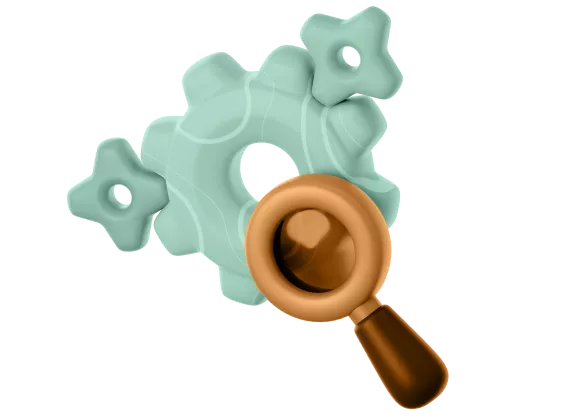Technical SEO for high-risk sites
For high-risk resources, technical SEO promotion requires special attention to such key aspects as site security, good page loading speed, mobile adaptation, and many other points. All these factors contribute to the fact that search engines can effectively scan and index the site.

What is a high-risk site and why is technical SEO optimization important?
High-risk sites are resources that search engines such as Google define as unsafe for users (for example, gambling sites, adult SEO). It is possible that after creating a resource and filling it with information, you receive an extremely low volume of search traffic, and there are no applications at all. The reason may be that the site is poorly indexed, loads too slowly, or other problems have arisen.
SEO audit allows you to maintain a high level of customer trust and avoid assigning the site the “high risk” status. Among the key benefits of search engine website optimization, it is worth highlighting:
- Improved indexing.
- Increasing page loading speed.
- Adaptation for gadgets.
- Fixing technical errors.
- Ensuring security.
Key issues for high-risk objects
The most common issues for high-risk objects have the greatest impact on the site’s position in search engines and organic traffic.
Slow page loading speed
Slow page loading speed can be caused by large images, a large number of HTTP requests, server or hosting problems, and other factors.
Problems with the mobile version of the site
User comfort is significantly improved by optimizing the page for mobile devices, i.e., correctly displaying the site on smartphones and tablets. Problems with the mobile version include incompatibility with some gadgets, inconvenient navigation, and slow loading.
Poor indexing and URL structure
Indexing errors can lead to the site not being displayed in search results. Too low a quality of site content can reduce indexing speed and, ultimately, traffic.
Presence of 404 errors and other redirects
When an item is deleted or out of stock, it is easy to forget about it, and a “404 error” appears on the page. 404 pages can be a problem in situations where:
- They receive traffic (internal and from organic search).
- There are external or internal links pointing to them.
- There are a large number of such pages.
- There are links to them on social networks.
Key technical aspects of SEO for high-risk sites
Marketing for high-risk companies is a special art that Andflint specialists master. To become visible to consumers, it is necessary to use effective innovative solutions.

Optimizing site speed
The site should be checked in Google PageSpeed Insights or using other services. Everything should be done on a test resource so that the main site is not affected. Where possible, make sure to update PHP to PHP7, if you use WordPress or a PHP CMS. This will have an impact on speed.
Mobile optimization
Your website should have a convenient mobile viewing experience (mobile version, app). The method should be chosen depending on your financial capabilities and needs.
Using SSL certificates
Using an SSL security certificate requires purchasing and installing it on your web server. You should purchase it from a reliable service provider. In addition, it is important to configure your website so that it uses an SSL connection and redirects users to a secure version of the resource (HTTPS protocol).
Working with canonical tags
A canonical tag is a piece of HTML markup. It helps search engines decipher duplicate pages and disregard them. If you have two identical or similar pages, you can use this tag to tell search engines which page you want to show in search results.
Fixing 404 errors and redirects
It is recommended to set up a 301 redirect from the deleted page to another relevant page on your site. This will save weight and traffic. In addition, you will be sure that users will find the information they need.
How to find and fix these errors:
- Run a scraper to find all 404 pages.
- Check the Google Search Console reports (Crawl > Crawl Errors).
- Analyze the list of 404 errors on your site.
- Recheck these URLs with Google Analytics to see which pages are receiving traffic. Recheck them with Google Search Console to see which pages have incoming links from external websites.
- Set up 301 redirects from the 404 page to the existing page you have identified.
How to track SEO optimization effectiveness?
SEO analytics tools should be selected individually for the client’s tasks.
Using Google Search Console tools
Google Search Console is a modern free service for tracking technical errors, indexing, and analyzing the clickability of pages in search. This powerful tool can provide a lot of specific information about the functionality, site security, and other aspects.
Analyzing speed with Pagespeed Insights
In PageSpeed Insights, you can see how quickly the page loaded for real visitors (“Observation data”). Good and average speed are acceptable. Only pages with low quality are considered slow loading; only they can incur Google penalties.
Common SEO mistakes for high-risk websites
Common SEO mistakes include:
- too many ads, outdated design, unreadable text, no contact information or company details;
- unrealistically low prices for products or services;
- unconvincing reviews (mostly negative or untrue);
- unclear or contradictory goals, promises of unrealistic results;
- using an insecure connection (no HTTPS), no SSL certificate.
Conclusion
In general, technical SEO optimization improves the visibility of a website in search engines, increases its reliability and security. All this is critical to maintaining a high level of customer trust and avoiding being assigned the “high risk” status.

